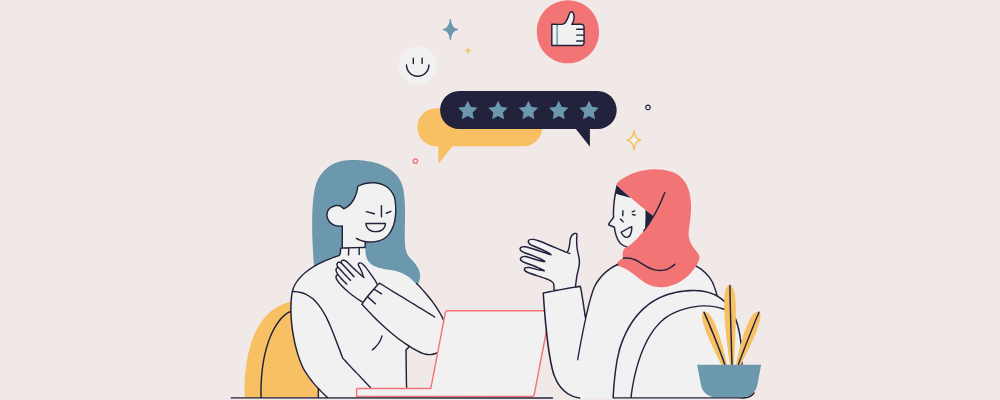Our biennial study on audiobook use among Canadians is here! Join BookNet Canada Research Associate Shimona Hirchberg and President & CEO Noah Genner as they go over how Canadian audiobook listeners discover, use, and feel about audiobooks, including what they like to listen to, when they like to listen, and how they obtain their audiobook content.
(Scroll down for a transcript of the conversation.)
Want to make sure you never miss an episode of the podcast? You can subscribe for free on iTunes, Stitcher, Pocket Casts, TuneIn, or SoundCloud.
Further reading/listening
Press Play: Audiobook Use in Canada 2020
Canadian Leisure & Reading Study 2020
Noah Genner's Tech Forum 2020 presentation Audiobooks in Canada
The Impact of COVID-19 on reading survey results
Inaugural Press Play email course sign up
Transcript
Shimona Hirchberg: Hey there! Your host of this month’s episode of The BookNet Canada Podcast is Shimona Hirchberg. I use she/her pronouns. I'm the Research Associate at BookNet. BookNet Canada endorses the calls to action from the Truth and Reconciliation Commission of Canada and supports an ongoing shift from gatekeeping to space-making in the book industry. We hope that our work helps to create an environment that supports that shift. I’m recording this in midtown Toronto, on the traditional, ancestral, and unceded land of the Anishinaabe, Haudenosaunee, Huron-wendat and Mississaugas of the New Credit territory. The land I’m quarantining on is part of the parcel of land collectively referred to as the Toronto Purchase, which applies to all land east of Brown’s Line to Woodbine Avenue and north towards Newmarket. This treaty allows non-Indigenous Canadians, like myself, to live on this land and use resources. So, thank you to the stewards of this land.
For this month’s podcast, we’re highlighting research in our recently released study, Press Play: Audiobook Use in Canada 2020. The PDF of Press Play is free to download from our website, booknetcanada.ca/bnc-research. The bulk of this study shares results from our survey fielded to audiobook listeners, and we fold in other research about audiobooks from other original, free, BookNet research sources like Canadian Leisure and Reading Study 2020 and our quarterly Canadian Book Consumer survey. We also fold in data from BNC SalesData and BiblioShare. I’ll be letting you know where research comes from throughout this episode, and of course, we cite our sources in the study.
I’ll also be sharing clips from BookNet CEO Noah Genner’s Tech Forum presentation on Audiobooks in Canada. The link is in our show notes and the full presentation can be viewed on our YouTube channel BookNet_Canada in the Tech Forum 2020 playlist – it’s video #19.
Let’s start off with format, to get an overview of audiobooks in relation to other book formats. Noah will share the following data from Canadian Leisure and Reading Study 2020 and Press Play: Audiobook Use in Canada 2020.
Noah Genner: So we do ask in our consumer and reading study what people are reading or listening to and 96% of people said they read a print book last year, 61% said they read an ebook, and 49% said they read an audiobook. Obviously, from these numbers you can see it totals more than 100%, people crosswalk across the different formats, especially within the digital formats, but across all of them. And that audiobook number, the 49%, that’s significant growth that we’ve seen from previous years, so even in 2018 when we did the study, only 35% of listeners had listened to an audiobook in the previous year, so like a 14% year-over-year.
We also ask about preferences of the different formats that are reading, so 66% of people said the prefer print books, 16% said they prefer ebooks, and 8% said they prefer audiobooks. Readers of all types still prefer print. Above 50% of ebook and audiobook listeners still prefer print. Ebook readers prefer ebooks but are much more likely to also be for audiobooks than our print readers. Audiobook listeners prefer all other formats over audiobooks – that’s odd – but they also really like ebooks. People that take advantage of the digital formats are more likely to crosswalk between those formats that I already mentioned.
Most read multiple formats (64%), almost half listened to at least one audiobook – as I’ve already mentioned. And when we look at that in a little more detail, almost half of readers read digital formats, about 45%, while only 1% exclusively listen to audiobooks. So people again crosswalk between formats. When we take that preference data that I brought up earlier and put it in a table presenting the difference through different primary formats broken down by age groups or cohorts – as I’ve mentioned everyone prefers print – 18 to 29 year olds and 55+ year olds prefer print more than the middle cohorts, the middle cohorts prefer ebooks and audiobooks more than all other age groups, almost a 100%, 98% of 18 to 29 year olds read print, the highest, but everyone reads a lot of print, 21% of the 45 to 54 year olds read ebooks, the highest, and 11% of 30 to 44 year olds listen to audiobooks, the highest for that format.
We also can look at those same age cohorts and break them down by the format that they listen to audiobooks. So what you’re seeing here is a stacked bar graph showing that older listeners listen to digital audiobooks less than others. If we compare physical to digital channels, 92% of respondents listen digitally while 41% listen to physical formats. 34% of respondents consume both physical and digital audiobooks. When we look at acquisition by age which is what you’re seeing here, it is likely not a big surprise that younger listeners tend to prefer digital formats, those aged 18 to 24, listen to 82% of their audiobooks in digital format and that digital to physical breakdown, changes over age groups so that as I already mentioned, the 65+ listeners tend to listen to more physical formats than digital formats
Shimona: It’ll be interesting to see how, or if, format preferences change over time. For book buyers surveyed in our quarterly Canadian Book Consumer survey earlier in April, half said that they sometimes prefer audiobooks over print books, with another 12% preferring it. More than half of buyers do not prefer ebooks over print books (55%). I wonder whether quarantine changed that. In a blog post, we shared results from a survey on the impact of COVID-19 on reading, also the blog name, that is listed in the show notes for those who want to learn more. We learned that the majority of Canadian readers aren't reading significantly more digital books in late March and early April, compared with February and prior. But, we don’t yet know more about whether preferences changed, especially now that print borrowing is back for libraries and never left for many bookstores. In that survey, 33% of readers are reading more ebooks and 23% are listening to more audiobooks than they previously did. They're not necessarily reading more print books either — only 36% are reading more print books than before. The majority of readers are reading formats in the same amount as before for print books (55%), ebooks (62%), and audiobooks (70%). We do know based on survey comments that many readers are trying out audiobooks for the first time and many are keeping to digital books. But will they stick with it?
In our audiobook survey and other surveys we’ve done, about four in ten Canadian readers listen to audiobooks. It’s growing, slowly. This year, most listeners were listening once a week (30%). Most listeners expect to listen about the same amount in 2021. Audiobook listening continues to grow, which we’ll talk more about later on.
Now, who are audiobook listeners? Let’s hear from Noah about the demographics of the survey respondents.
Noah: So let’s look at those listeners a little bit demographically — we do capture the full demographics for these studies. Overall the demographics of an audiobook listener is fairly evenly split between the genders. 55% of women listen to audiobooks and 45% of men. The majority of listeners are between the ages of 25 and 44, a younger cohort for sure, most work full-time, most are formally educated, more than a quarter have a household yearly income greater than a [hundred] thousand dollars, most are not parents, and most are either married or living with a significant other.
Shimona: The data that Noah will share next about audiobook sales, the value of audiobooks, and more about the money buyers spend on audiobooks is compiled from BNC SalesData, our quarterly Canadian Book Consumer survey, and Press Play: Audiobook Use in Canada 2020.
Noah: We also tracked the sales of physical audiobook items from retailers in Canada through our BNC SalesData service. The number that we’ve received as a portion of all the sales has never been very high. So what you’re seeing here is a line graph for the last ten years with 2010 physical audiobook sales accounting for 0.41% of the market and then 2019 that’s down to 0.13%. So it’s never been a huge amount but even with that small percentage that’s a pretty significant decline in physical audiobook sales and we’ll touch on physical audiobook sales a little bit as well.
We also asked in our consumer panel about audiobook value, we ask about all format values, but what value do people get from the books that they buy. And 88% of people who purchased audiobooks say that they get excellent or good value, almost a 100% of people say the get excellent, good or fair value. Very few people say that they get negative, poor or bad qualifications for audiobooks. Not surprising because audiobooks can be expensive so people are still feeling that at the prices that are paying that they are getting good value. So what are those prices that are paying? Well, it looks like in our consumer panel on average, people say they’re spending about $15 for their audiobooks, this may be a bit low or high, it’s hard to say 100% for sure but subscriptions are usually around $12 to $14 CAD in a month so people are probably using that as their precursor for what they’re paying for an audiobook. While the list prices for audiobooks are being much higher than that – this is the price that the publisher puts on if you were to buy a specific audiobook by itself – and the average price in 2019 of audiobooks in our consumer panel was about $39, so purchasing was $15 and list price was $39.
Ebooks and audiobooks have a similar value profile, people think that ebooks have a lot of value too – all books across all formats have a very good value profile. People think that they are getting good value for the price they’re paying, but the digital formats they feel they’re getting a little more value for the price they’re paying. I think with ebooks that’s probably because it’s cheaper and with audiobooks it’s probably the subscription thing that’s taking part in. So most listeners are spending $1 to $ 25 on audiobooks in a year. While there’s some fluctuation in spending over the past few years, almost half of listeners have an annual spend of only $25 or less in audiobooks, and 20% of listeners get their content for free, which we touched on. In 2020 spending in the prior year did increase by 5 % in the $26-$50 category, we also see slight increases in the higher bands up around $100, this may have to do with the increase on subscriptions that I mentioned before, we see a lot more subscriptions in 2020 or growth in people who are using subscription service, if you just do the math, back-of-the-envelope math, 12 x $12, 12 months times $12 for subscriptions it’s about $144.
56% of audiobook listeners say they’re spending $50 or less in audiobooks a year, 20% say they’re not spending any money at all on audiobooks and 15% say they’re spending $76 or more and that’s the $100 bracket that I mentioned before. And when we break down the listener type, again, these are our avid, frequent, light listeners of audiobooks, you can see the different bands here, so you’re seeing a bar chart of the price people tell us they paid over the course of the year for audiobooks broken down by the different listener types. So when we look at span by reader type we find the proportion of those who read the most spend considerably more – that shouldn't come as a big surprise. While there are a few avid readers – those who listen to more than 50 audiobooks a year – 60% of them spend over $100 a year, again this is probably the subscription people. On the other side those who are light listeners listen to up to 5 books per year, more than a quarter of them spent zero, and 39% spent $25 or more, so a large portion of them almost 70% of people spent $25 or less and these are just people that may just dabble in audiobooks.
Shimona: What are listener types, you say? I hear you. Respondents in our audiobook survey were asked to select the approximate number of audiobooks that they listened to in the past year. Light listeners, the majority of respondents at 58%, listened to one to five books last year. Moderate listeners listened to six to 11 audiobooks, frequent listeners listened to 12-49 audiobooks, and avid listeners, the smallest group at 3%, listened to 50 or more audiobooks. Noah will tell us more about the demographics of each listener type group.
Noah: Light audiobook listeners are mostly women, 34-24%, men are more likely to be moderate listeners than women and frequent and avid listeners are pretty much split about 7% to 6% of the listening groups. So let’s look at these kind of different listener types demographically in a little more detail because I think it’s important to know who is in these brackets and how you might be able to get to them. So our first listening type is the light listener, we named this listener Salma and she listens up to five books in a year, this listener type also qualifies as the overall average audiobook listener. For social media she primarily uses YouTube, Facebook, and Instagram and listens to podcasts once a week, she tends to discover audiobooks by recommendation – that is through word of mouth, library staff or online. She listens to books so she can do other things at the same time, as I’ve already mentioned running errands, shopping or while commuting to her full-time job. Her preference is to read one book at the time and do not usually read the same book in different formats, she has no children.
So let’s move on to the moderate listener, David. Moderate listener listens to once per week and consume between six and 11 audiobooks per year, he primarily finds the books he listens to because he has read or listen to books by the same author, he spends $26 - $50 on audiobooks per year and likes to listen on his phone while commuting. He can still listen to and read the same subjects, when it comes to social media, he primarily uses YouTube followed by Facebook, he has no children.
Our next listener type is the frequent listener, Libby, the frequent listener is a female and listens to between 12-49 books a year, she listens daily, she tends to find books by browsing in either a store or a library and as such her primary way of getting audiobooks is through the library. She prefers to listen to audiobooks on her phone while doing housework and she’s a parent.
And our last listener type, the avid listener, those who listen to really a lot of audiobooks per year, Manuel is our avid listener who consumes a whopping 50 or more audiobooks a year. To keep up with the pace he listens more than once per day, books are primarily found by recommendations – through word-of-mouth, library or bookstore staff or online. 35% of avid listeners subscribed to an audiobook subscription service with the most popular service being Audible. He likes to listen while doing housework, expects to listen to more books next year than he consumed this year, he’s not a parent.
So this can give you some detail into the different listening levels and who might be the primary person and the social media they use for those different groups.
Shimona: Now that we have an idea of who our survey respondents are, how do they become aware of the books they listen to?
Noah: The majority of respondents predominantly became aware of the audiobooks they consume via recommendations (36%), this could be a recommendation by a friend, a librarian, bookstore staff or through media or the internet, social media. Comparing this to BookNet Canada’s consumer data, we find similarities in the way consumers become aware of the books in other formats: by reading other books by the same author, browsing in a store or through reviews and recommendations. It is interesting to note that 17% of audiobook use in Canada survey respondents said that they listen to the audiobook version because they had already read either the print or ebook version of the same book, so these are people that have read it and decided they also want to listen to it, maybe because there was an actor or an author reading it or maybe they just wanted to consume it in a different way or again, so that’s a fairly high percentage, 17% of people.
Shimona: What are the top 3 ways most audiobook listeners get audiobooks from and how has this changed from 2018? Well, in 2020, the way most listeners got audiobooks is by downloading or streaming from online and apps for free, about the same as in 2018. The second way is from buying online from a store or online retailer, less than in 2018. The third most popular way was from buying an audiobook subscription service, which listeners did more in 2020 than in 2018. Learn more about subscriptions in Noah’s presentation and the study.
Most digital listeners are getting audiobooks from YouTube (37%), Audible Audiobooks/Kindle Unlimited (33%), and digitally from the public library (28%). When it comes to looking at paid vs. free content, there is not necessarily a correlation with those who are accessing legal or illegal audiobooks. Check out the full study for more on that. Three in 10 audiobook listeners borrowed a digital audiobook from the public library and two in 10 borrowed a physical copy from the public library.
Speaking of library borrowers, I want to highlight a few differences between listeners who borrow audiobooks from the library and those who don’t. 43% of borrowers learn about books through recommendations in comparison to 36% of all listeners. And, borrowers become aware of titles by browsing 5% more than all listeners. Slightly less borrowers also buy audiobooks, 28% vs. 32% of all listeners.
Let’s talk about audiobook circulation in libraries. Data provided by the world’s leading digital reading platform for libraries and schools, OverDrive, shows that the circulation of audiobooks in thousands of Canadian libraries increased 32% from 2018 to 2019. Checkouts exponentially increased each year at an average of 30%. In numbers, there were almost 7 million audiobook checkouts in 2018 and nine million audiobook checkouts In 2019. We’ll know later on whether COVID-19 led to an increase of 12 million or more in 2020… Of course, OverDrive is only one of the digital audiobook lending platforms in public libraries. We didn’t get data from platforms like Hoopla and CloudLibrary.
One quarter of listeners say they listen to audiobooks in a language other than English. This has increased 5% since 2018. Of those who listen in another language, 41% listen in French. The next most popular languages are Mandarin, Spanish, and Cantonese. Remember this in next month’s podcast episode on audiobook production where language comes up for narrators and engineers.
Most listeners are listening to Mysteries or Thrillers. Other popular Fiction and Non-Fiction sub-genres are well below that one, like History, Science Fiction, Self-Help, Fantasy, and True Crime. We have two Top 8 lists for Fiction and Non-Fiction and more on sub-genre popularity cross-tabbed by listener type and other demographics in the study. For YA and Juvenile subjects, only 16% of listeners said they mainly listen to Young Adult books and 7% listened to Children’s books.
Six in 10 audiobook listeners said they always or sometimes like to listen to a specific narrator. We asked some open questions at the end of the survey and a few respondents commented that sometimes a narrator can get in the way of the story or they don’t like it if a narrators’ voice changes throughout a book. Additionally, 17% of respondents said that they search for specific narrators when looking for audiobooks. We also talk about searching out specific narrators in next month’s episode. You can find out more about audiobook listeners’ preferences in the study where we asked about phases of reading, having another book lined up for when they finish their current book, and how many books listeners read at any given time.
Lastly, let’s hear from Noah about Canadian content in BNC BiblioShare and Press Play: Audiobook Use in Canada 2020.
Noah: Just looking at what books are available in the Canadian marketplace, it is a little bit hard for us to tell, we don’t get extensive bibliographic data on the digital format of audiobooks, we get some but not a lot, but it continues to grow. So what you are seeing here is that we have about a 187 thousand audiobooks listed in our bibliographic database and then it counts for 0.7% of all the books that are there, 1400 of those are flagged with a Canadian contributor – I’d love to see that number higher and we assume that there’s much more Canadian content available but we just don’t have a whole digital content.
So looking at that Canadian information a little bit more, when it comes to Canadian content we asked respondent if they search for books about Canada or Canadian regions or if they search for Canadian authors, we find that 46% of respondents sometimes or always searched for Canadian content or Canadian authors – that’s great. That’s another great reason that we’d like to see publishers and those providing metadata to flag their Canadian contributors wherever possible, including on your digital audiobooks.
Shimona: Thank you for listening! We’re disseminating this research in all sorts of formats so pick and choose which serves you best. To watch Noah’s full presentation, go to our YouTube channel BookNet underscore Canada and then to the Tech Forum 2020 playlist - it’s video #19. If you want to read the full report, with the alt text graphs and tables (and quotes!), download Press Play: Audiobook Use in Canada 2020 from our website, booknetcanada.ca/bnc-research. If you want to learn visually but a study is too long, the last email of our inaugural email course on Press Play is going out July 6, so, depending on when you’re listening to this, you can still subscribe if you’d like at booknetcanada.ca/bnc-research.
If you don’t want to miss future email courses and you want to get a roundup of research in one email every month, subscribe to our research newsletter on our website. All links are in the episode notes.
We'd like to acknowledge the Government of Canada for their financial support to the Canada Book Fund and, to you listeners, thank you and take care. Bye!














The latest news out of the European Commission.